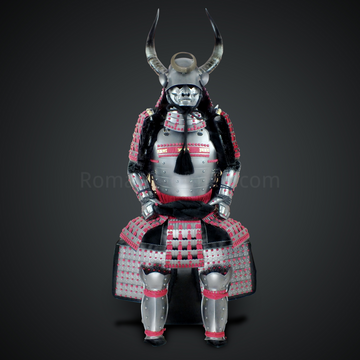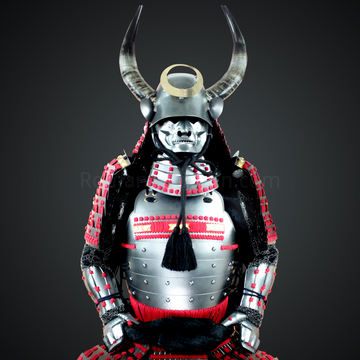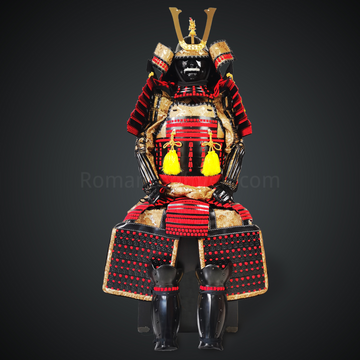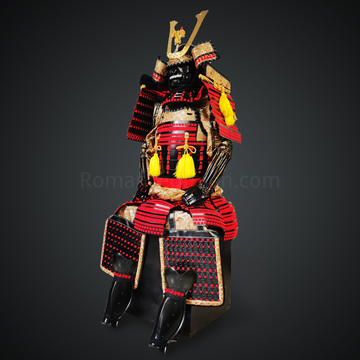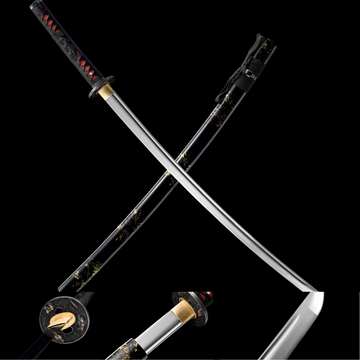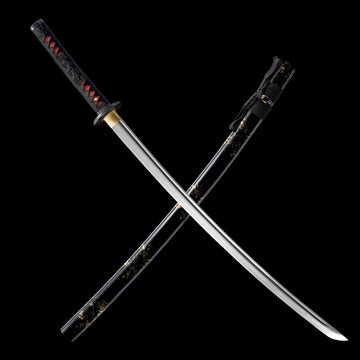Introduce the samurai armor Kusazuri History and types
What is Kusazuri?

Kusazuri (草摺) refers to the part of the samurai armor that is hung from the Do (cuirass), covering the lower body from the waist to the thighs for protection. It is usually made of the same material as the do, such as leather or iron plate.
The number of Kusazuri plates (枚数) varies depending on the type and era of the armor, and it is generally divided into about 4 to 8 pieces. The name Kusazuri is derived from the fact that the hem rubs against the grass, and it was also called “Gesan” or “Koshiyoroi”.
Kusazuri on Oyoroi (大鎧):

In Oyoroi, usually pairs with Kusazuri with 4 plates that attached to the front, back, left, and right, called “Yonken Kusazuri” 四間草摺 (literally means 4 plates kusazuri)
For Oyoroi used from the Heian period to the Kamakura period, mainstream battle style was on horseback shooting arrows, so Kusazuri with thick armor and a wide hem was the most reasonable choice as armor. The Kusazuri of the Oyoroi made in this era is composed of Itazane (札板) that made by connecting many kozane (小札). Other than iron, the kozanes could also be made of leather to achieve lightness and maintain defensive performance.
Kusazuri on Doumaru (胴丸):

Domaru appeared when infantry battles become popular and replace cavalry. Oyoroi is a fairly heavy armor, and it was not designed to walk on foot at all. On the other hand, Domaru is armor made for infantry battles on the ground. The large and heavy Kusazuri of the Oyoroi was not longer suitable for Doumaru.
Therefore, the Kusazuri of Domaru greatly changes its shape. First, what was a four-plate Kusazuri became an “eight-plate Kusazuri”. This greatly improve the armor mobility.
Kusazuri on Haramaki ( 腹巻):

Haramaki, which was made almost at the same time as Doumaru, was also armor made for infantry battles. The number of plates on Kusazuri varies from 5 to 7, compare with Oyoroi, it was much easier to move with the armor on. Furthermore, Haramaki was shorter than Domaru, It can be considered that Domaru increased mobility by increasing the number of cuts, and Haramaki increased mobility by shortening the hem itself.
Kusazuri on Tosei Gusoku ( 当世具足):

In the Sengoku period, infantry battles became even more intense, a more robust, yet still light enough for agility type of armor is required. At this time, the armor that was based on Doumaru and Haramaki evolved, this is Tosei Gusoku.
Kusazuri on Tosei gusoku could have more plates than other armors, as many as 13 plates. This increase the mobility of the armor a lot. In addition, a thread called Yurugi-no-ito (揺絲), which connects the body and Kusazuri, has become common. This is thought to be a device to allow the Kusazuri to move freely even when the upper belt, where the sword is inserted, is wrapped
